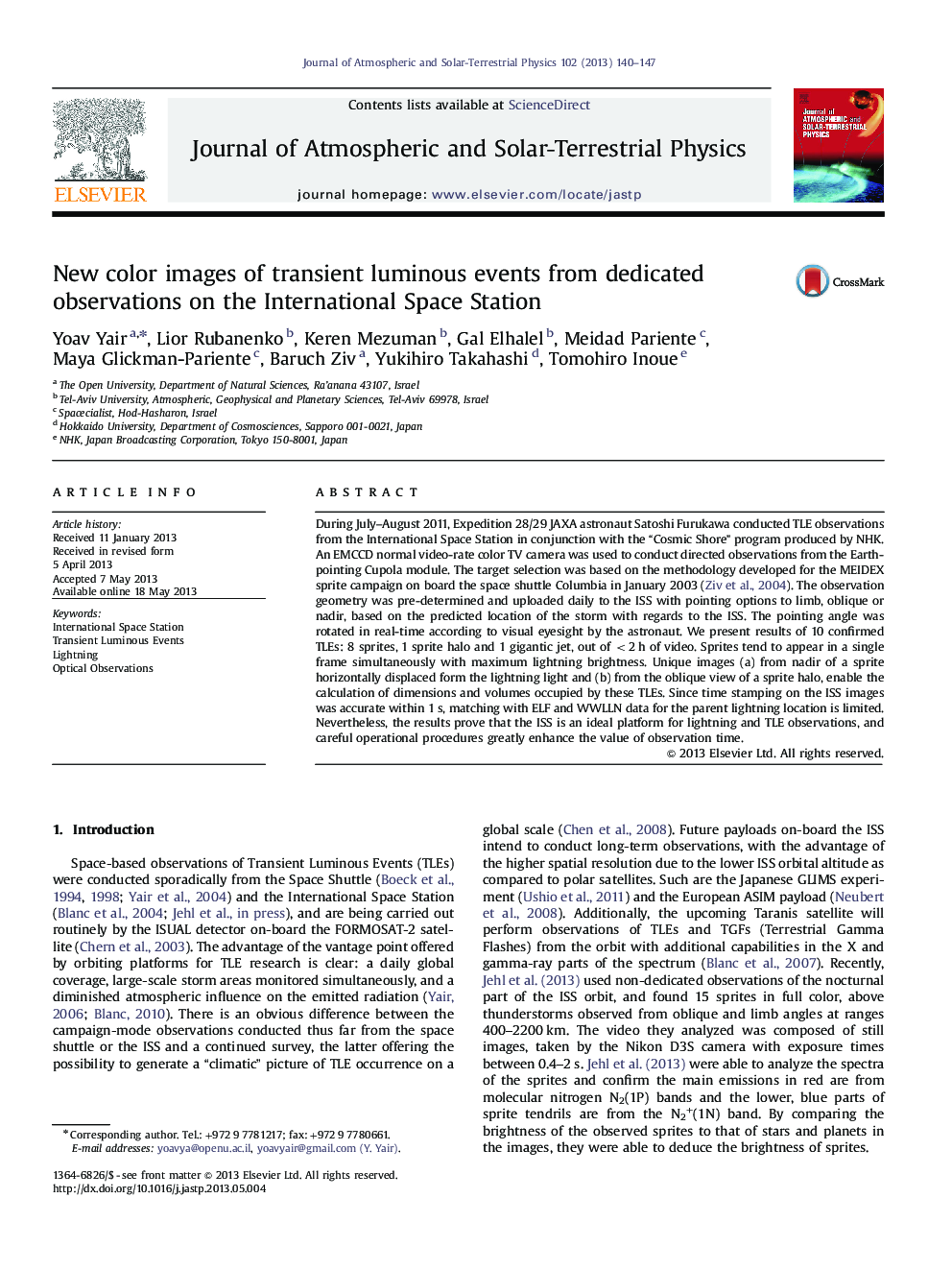| Article ID | Journal | Published Year | Pages | File Type |
|---|---|---|---|---|
| 8140583 | Journal of Atmospheric and Solar-Terrestrial Physics | 2013 | 8 Pages |
Abstract
During July-August 2011, Expedition 28/29 JAXA astronaut Satoshi Furukawa conducted TLE observations from the International Space Station in conjunction with the “Cosmic Shore” program produced by NHK. An EMCCD normal video-rate color TV camera was used to conduct directed observations from the Earth-pointing Cupola module. The target selection was based on the methodology developed for the MEIDEX sprite campaign on board the space shuttle Columbia in January 2003 (Ziv et al., 2004). The observation geometry was pre-determined and uploaded daily to the ISS with pointing options to limb, oblique or nadir, based on the predicted location of the storm with regards to the ISS. The pointing angle was rotated in real-time according to visual eyesight by the astronaut. We present results of 10 confirmed TLEs: 8 sprites, 1 sprite halo and 1 gigantic jet, out of <2Â h of video. Sprites tend to appear in a single frame simultaneously with maximum lightning brightness. Unique images (a) from nadir of a sprite horizontally displaced form the lightning light and (b) from the oblique view of a sprite halo, enable the calculation of dimensions and volumes occupied by these TLEs. Since time stamping on the ISS images was accurate within 1Â s, matching with ELF and WWLLN data for the parent lightning location is limited. Nevertheless, the results prove that the ISS is an ideal platform for lightning and TLE observations, and careful operational procedures greatly enhance the value of observation time.
Related Topics
Physical Sciences and Engineering
Earth and Planetary Sciences
Geophysics
Authors
Yoav Yair, Lior Rubanenko, Keren Mezuman, Gal Elhalel, Meidad Pariente, Maya Glickman-Pariente, Baruch Ziv, Yukihiro Takahashi, Tomohiro Inoue,
